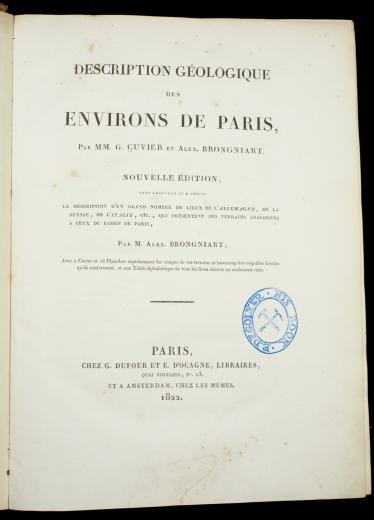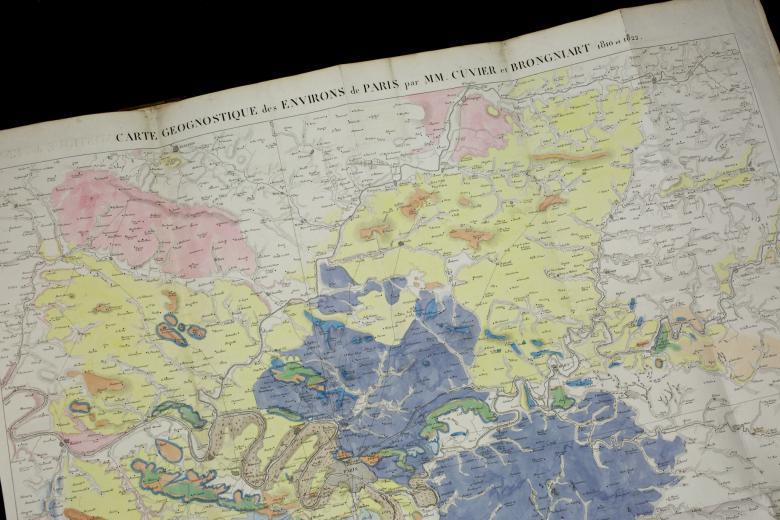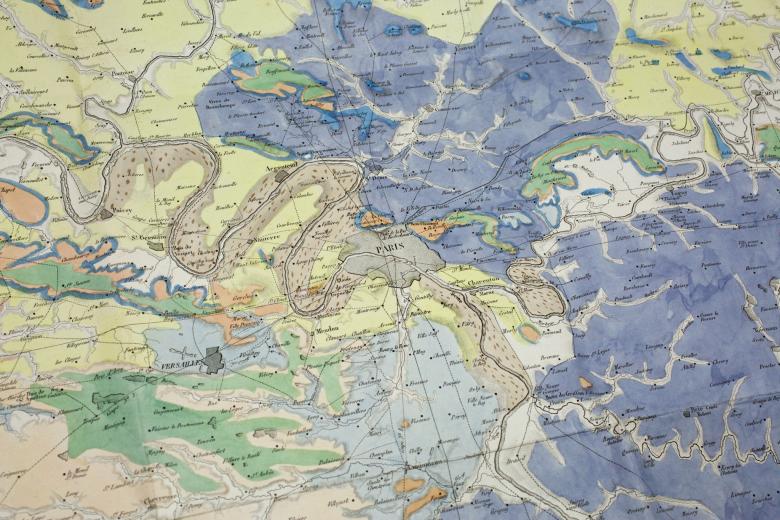Citation
Item Location
Cuvier, a geologist and naturalist at the Paris Natural History Museum, was the leading comparative anatomist of his generation.
At the end of the 18th century, naturalists as diverse as Thomas Jefferson and J.B. Lamarck rejected the idea of extinction. Cuvier set out to prove the reality of extinction as part of his overall conception of a vast, pre-human history of the Earth. He concentrated his attention on large fossil quadrupeds which, he reasoned, if they were still alive, ought already to be known to naturalist explorers.
Putting his expertise in comparative anatomy to work, Cuvier reconstructed large fossil animals such as the mammoth, mastodon and megatherium. In the case of the mammoth and mastodon, Cuvier showed that they were separate and distinct species from modern elephants, refuting suggestions that their anatomical variations were due merely to the effects of climate or other environmental causes. With each new fossil quadruped reconstruction, the increasing number of strange creatures from the past that were unknown to explorers greatly strengthened the argument for the reality of extinction and the deep history of the Earth.
In vol. 1 of this work, Cuvier and Alexandre Brongniart showed how fossils were the key to unravelling the order of the strata in the Paris basin. These “recent” strata contained fossil bones of strange creatures such as the anoplotherium, another large quadruped that was surely extinct. Fieldwork discoveries and anatomical reconstructions thus combined to demonstrate the existence of former, pre-human worlds.









